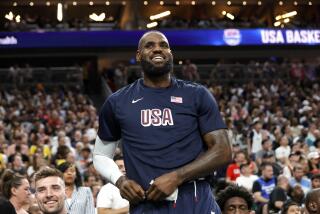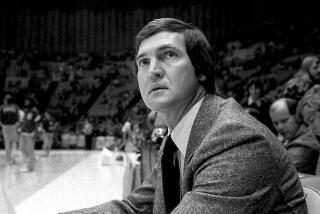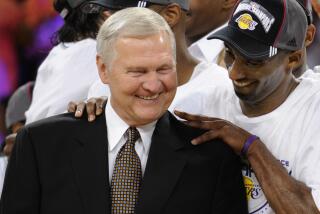How one man brought the Lakers vs. Celtics rivalry to Italy 40 years ago
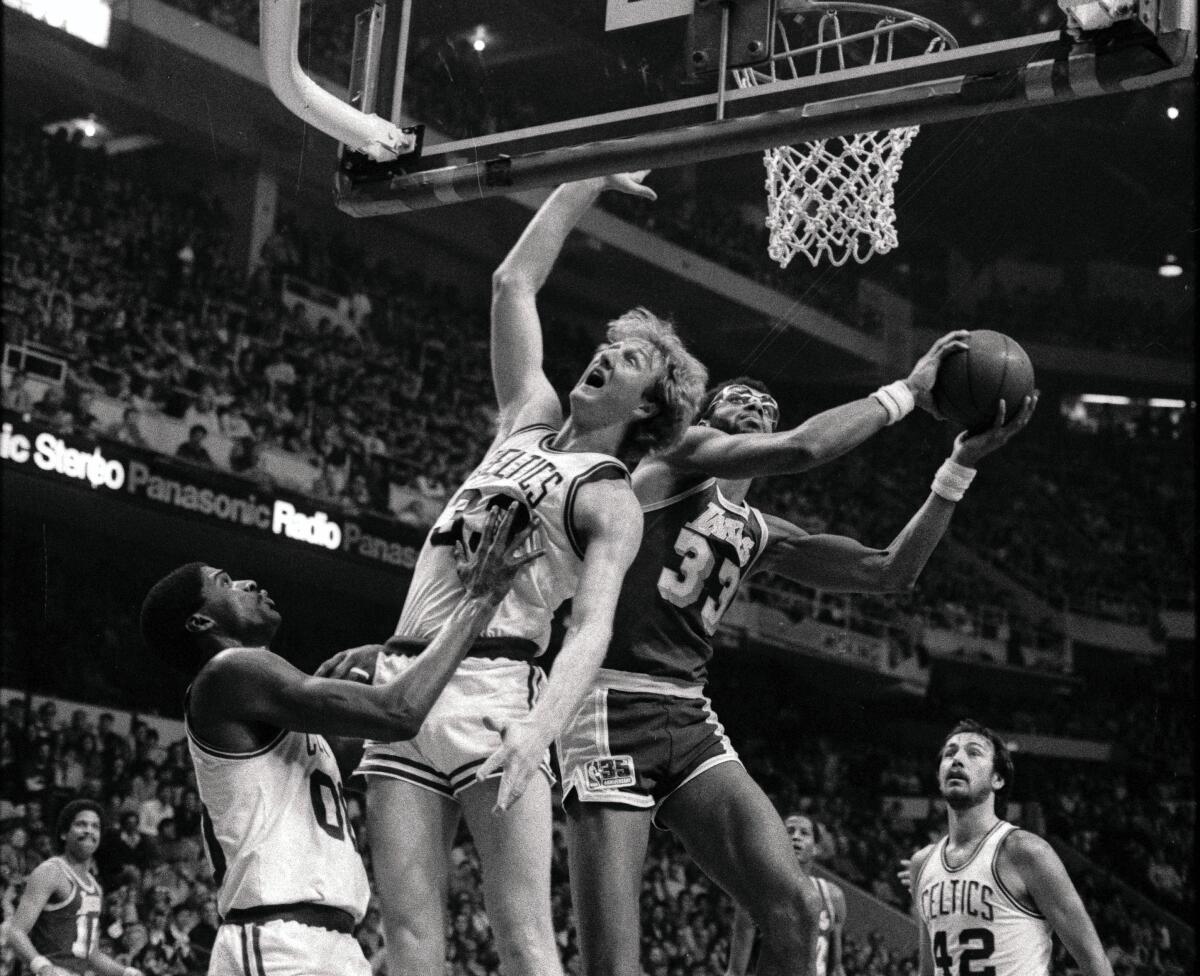
- Share via
The 22-year-old Italian had been flying to New York for a decade, a perk of being the son of a TWA employee. Yet on this trip 40 years ago, nothing could go wrong.
He needed to make the pickup, evade the attention of customs officers and make it back to Milan.
The future of the NBA depended on it.
Inside his travel bag were two reels with 90 minutes of one-inch film wrapped around them. If he was successful, he could open his country’s eyes wider than ever to the NBA’s most famous teams — the Los Angeles Lakers and the Boston Celtics.
For the first time in the league’s history, a game was going to be shown to an international audience, and Andrea Bassani couldn’t make a mistake with the cargo. If those tapes didn’t make it to Italy in time for the broadcast, the first televised NBA game outside of America would be delayed.
“I would’ve taken the next flight back to New York and stayed there forever,” said Bassani, who was nervous about what would happen if questioned by customs officials about the tapes.
The Lakers dedicated last season to Kobe Bryant and delivered a championship. The Mamba mentality still resonates with them every day.
Instead, Bassani got the tapes to the broadcasting partner, former American basketball coach Dan Peterson provided the commentary in shaky Italian and 13 days after the Lakers lost to the Celtics in Boston in 1981, Italy became the first country outside of the U.S to air an NBA basketball game.
The league soon was a fixture on television in Italy, where a young Kobe Bryant had access to the league’s top games, which almost always featured either the Lakers, the Celtics or the Philadelphia 76ers.
Saturday’s meeting between the Celtics and the Lakers will be broadcast live in Italy on Sky Italia, which will also show the 1981 game, a full-circle moment for a league that’s seen its net stretch to all corners of the globe since Bassani got his tapes past customs officers.
“Our league has done a great job of branding itself, not only here in the United States but all around the world,” said Detroit coach Dwane Casey, who coached in Japan’s professional leagues. “Now it’s instant. It’s instant. Once we play this game tonight, you can call somebody over in Japan and they’ve seen it or at least seen the highlights of it. That’s a good thing.”
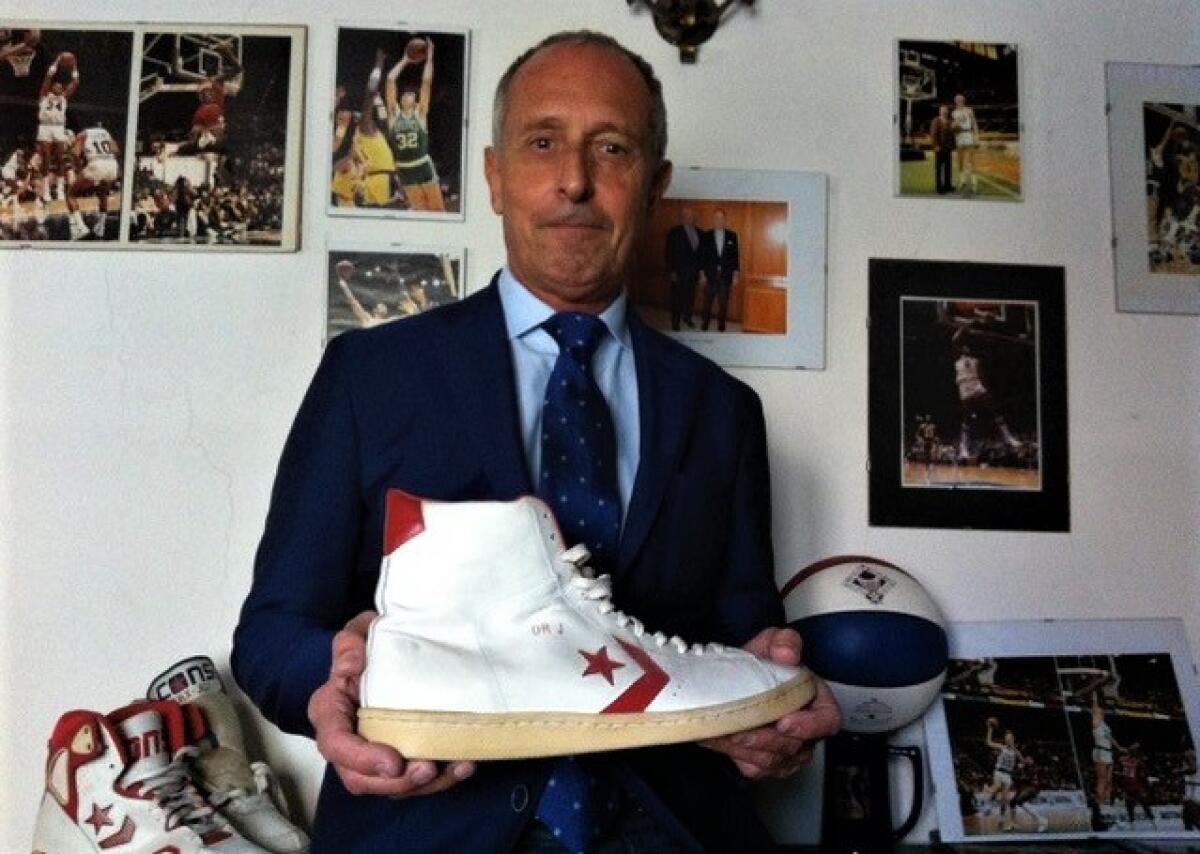
The NBA is now broadcast in more than 215 countries and territories in more than 50 languages. Some of its biggest stars were born outside of the U.S. In 2019, the Toronto Raptors — a team that took the first European player No. 1 overall, Italian center Andrea Bargnani — won the NBA title with a team full of international players and staff.
Before there were fiber optics and satellite coordinates, though, there was Bassani, his tapes and his luggage. Before Bassani, there was Giorgio Gandolfi, a basketball journalist from Italy enamored with the NBA and charming enough to make friends with some of the league’s most influential people.
During the 1970s while writing and taking photos for a basketball magazine named “Giganti de Basket,” Gandolfi would call the NBA offices, sometimes spending 20 minutes on hold with international operators. He asked for books, programs and any film he could get his hands on.
In 1976, Gandolfi traveled to New York to cover his first games — Julius Erving was his first big interview. The two men became friends — Erving even gifted him one of his sneakers.
Gandolfi’s work in publishing helped introduce American basketball to his countrymen, helping to ignite the appetite for more.
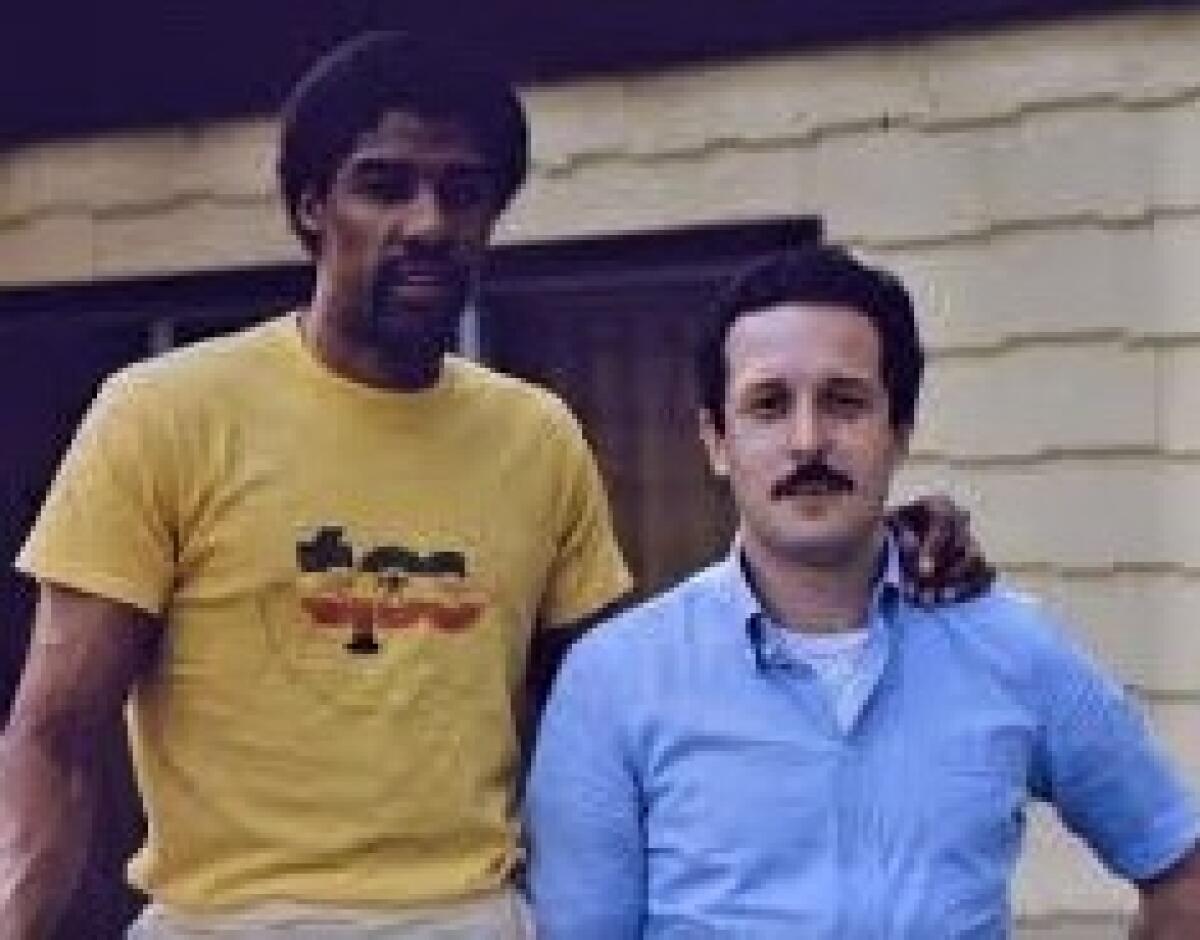
He also charmed NBA coaches during his trips to America, receiving 8-mm game films from coaches such as Chuck Daly and Dick Motta. He took them home and showed them in movie theaters, with crowds of up to 700 marvelingat Pete Maravich‘s no-look passes, Bill Russell’s defensive domination, Kareem Abdul-Jabbar’s grace and skill, and the high-flying acrobatics by Connie Hawkins and Erving.
Bassani was in one of those theaters watching Erving come to life after years of seeing him only as a photographed image.
“His afro was big as the screen in a movie theater in Milan,” he remembered. “It was two hours with my jaw totally open.”
The Lakers-Celtics rivalry was a logical starting point, the two franchises iconic pillars in the NBA’s mythology. Thirteen days after Boston beat the Lakers in a game with six future Hall of Famers (not counting an injured Magic Johnson), the game aired on PIN, a short-lived national station in Italy.
“This was unbelievable. This was moving. This was action,” Gandolfi said. “Everybody was crazy about this.”
Without Gandolfi’s evangelism, who knows when the world would have been able to enjoy it? The NBA would’ve eventually found a way to go global, but the way it actually started was because of people involved in getting this game onto the air in Italy 40 years ago.
“I’m extremely proud to be one of the first people to try and do that,” Gandolfi said, a basketball sitting on a table inside his home as a reminder of his life’s work. “Basketball has been my love for several, several years. And still now.”
The Lakers-Celtics matchup Saturday will look different, fans unable to be inside the building to heckle and cheer, to provide the game with the energy that it always seems to manufacture when the rivals face one another.
The history between the two teams will need to create the environment.
“It’s pretty cool, just knowing the history. You know Lakers-Celtics throughout the course of this league and what it means to this league, the history of this league,” Lakers star LeBron James said. “And just seeing some of the biggest games, some of the best rivalries, some of the best players ever to play this game, to be a part of this rivalry was a pretty cool thing being a part of the history.”
Not all of that history is measured in wins and losses, in banners and retired numbers. The legacy of Lakers-Celtics is much bigger, the spark that helped ignite the NBA into the global giant that it is now.
At the time, Bassani didn’t know that was what was in his bag. He thought he was just carrying tapes of NBA games he’d picked up at CBS’ New York studios.
It was more than game film. It was the start of the NBA’s global takeover, all carefully placed inside the bags of a 22-year-old on a transatlantic flight who just wanted to make sure he made it through customs.
More to Read
All things Lakers, all the time.
Get all the Lakers news you need in Dan Woike's weekly newsletter.
You may occasionally receive promotional content from the Los Angeles Times.


